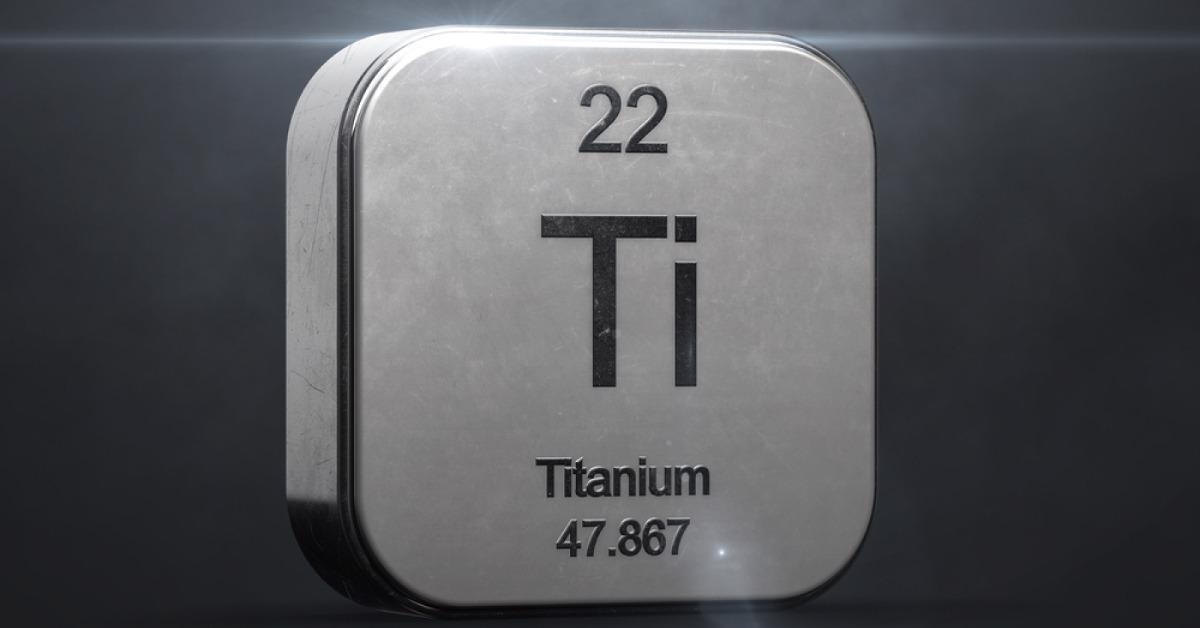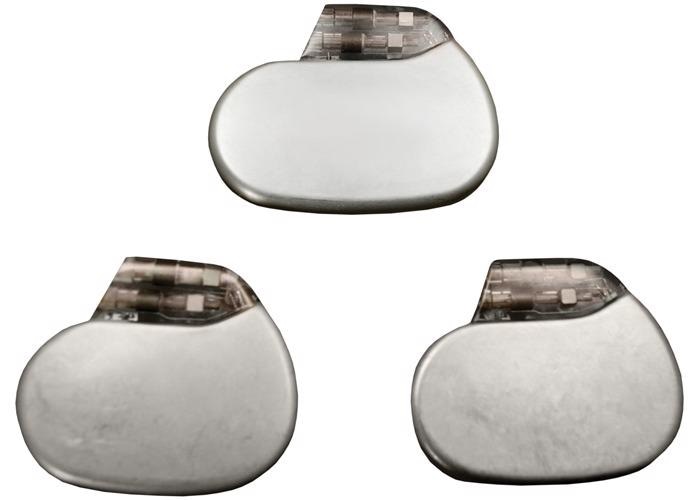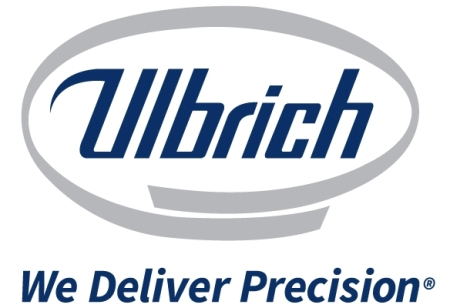The discussion regarding the manufacturing applications of titanium has been dominated by Grade 5, 6-4 titanium for decades. This has largely been because of the extensive use of this alloy in advanced aerospace and military applications.

Image Credit: Ulbrich Stainless Steels & Special Metals, Inc.
Grade 5 Titanium is more well-known because it has traditionally been the most commercially available titanium alloy, and documentation regarding it abounds. Less well known is the fact that the low formability makes Grade 5 Titanium alloy twice as hard to work with as Grade 9 Titanium, despite being twice as strong.
Both alloys are excellent and have many applications. However, Grade 5 Titanium is not always the ideal titanium choice for precision, cost-effective applications in the power generation, gas, oil, medical, automotive and aerospace industries.
Grade 9 Titanium (3-2.5) is well-suited for producing high tech products ranging from aerospace honeycomb to medical pacemakers and is frequently the superior choice for many applications in a wide range of industries.
Titanium Grade 9 is much stronger than commercially pure titanium because of its mechanical properties. Unlike Ti-6-4, Titanium Grade 9 can be cold worked because of its 3% Aluminum, 2.5% Vanadium, giving it excellent resistance to corrosion, moderately high strength and good ductility.
There are distinct differences between Grade 5 and Grade 9 when manufacturing, labor and production costs are considered despite both bring alpha-beta titanium alloys with 90% of their alloy composition in common.
Both types are superior metals with corrosion-resistant characteristics and excellent strength. The use of Ti 6-4 in cases when Ti 3-2.5 alloy can easily meet needed component specifications can definitely negatively impact the bottom line.
When deciding between Grade 9 or Grade 5 titanium, the application is always the determining factor.
Welding titanium requires a specific atmosphere and can be a difficult process in either grade. Doing so also requires advanced techniques such as electron beam, plasma arc, TIG, and MIG.
Current state-of-the-art methods for joint design, operations, post-weld cleaning and pre-weld cleaning are detailed in a 217-page document titled Welding Procedures For Titanium and Titanium Alloys and produced by NASA.
It is of the utmost importance that the most cost-effective grade is used whenever the application permits because of the technical precision and inherent manufacturing costs required for working with titanium; that grade is Titanium 3-2.5 for many applications.
Elevated Costs with Grade 5 Titanium 6Al-4V
There are some material characteristics in which Grade 5 Titanium is moderately superior to Grade 9 Titanium, including tensile strength and shear. However, for manufacturing applications where working with a precision-rolled coil is optimal, there are serious challenges to using it.
Grade 5 Titanium (Ti-6Al-4V) is a common choice for use in demanding applications where a material is needed that can emulate bone-like for biomedical implants or for high temperature structural applications such as the aerospace industry.
An important alloying element for both Grade 9 and Grade 5 Titanium is vanadium. Alloying vanadium with Ti results in a titanium alloy that is significantly stronger than commercially pure titanium but still has comparable characteristics of thermal and stiffness.
As mentioned above, Grade 5 is the popular choice for orthopedic medical devices because it has properties similar to human bones. There are many other applications for Grade 5, including nuts and bolts used in harsh conditions, bicycle parts and tension set rings.

Image Credit: Ulbrich Stainless Steels & Special Metals, Inc.
Titanium Grade 5, which is also known as '6-4' on production floors, is typically used for applications that involve machining. This titanium alloy is not usually available as a coil and is instead most commonly available only in sheets and plates.
Grade 5 cannot be as efficiently stamped or drawn as Titanium Grade 9 because it is not cold-formable. There are better options in formable Titanium Alloys, and so it is most often used when no forming is needed because.
However, Grade 5 can be hot formed with contact heating, although the process is not as streamlined as the process of batch production when unspooling from a coil and instead requires special considerations and equipment.
Grade 5 titanium is a highly desirable, fantastic material for extremely demanding applications. It has a higher production cost resulting from process costs and vacuum melting, which increases storage expenses and warehousing risk for manufacturers.
Grade 5 must be meticulously ground down or cut to achieve the desired thickness and has severely limited use in small gauge applications. Scrap Grade 5 Titanium material cannot be re-melted because of those grinding and cutting operations that result in it mixing with the grinding media, increasing the yield loss.
21st Century manufacturers in all tiers are looking to Titanium 3-2.5 because of this for solutions for their manufacturing applications when wire, foil, or strip gauges are needed.
Manufacturing Solutions with Grade 9 Titanium 3Al-2.5V
Ulbrich offers Grade 9 titanium as a cold-rolled, more workable alternative to its 6% Aluminum, 4% Vanadium cousin. For applications where precision is paramount, Ti 3Al-2.5V is the best option.
Its use helps to reduce expenses for consumers and enhances the JIT (Just in Time) supply chain that is so prevalent in the modern competitive tiered manufacturing environment.
Grade 9, also known as TI 3-2.5 titanium, is significantly more versatile for a wider range of parts and components than grade 5 and can be rolled down to much smaller gauges. Grade 9 titanium can be used at higher temperatures than the commercially pure Grades 1 through 4 and additionally has excellent corrosion resistance.
Titanium 3-2.5 is ideal for precision applications in the automotive, marine, aerospace, and medical industries because it can be cold-rolled and formed, in addition to having excellent corrosion resistance and easier workability.
Grade 9 can be formed, stamped, and drawn, unlike titanium 6-4 and can also be rolled down to extremely thin gauges of .001" or .025 mm. Grade 9 has good weldability and is heat treatable, and is also much less difficult to form than Titanium Grade 5.
It can also be hardened by aging and cold work. Among common applications of Grade 9 are:
- Bellows
- Golf cart shafts
- Honeycomb
- Hydraulic tubing
- Tennis racquets
- medical pacemakers

Image Credit: Ulbrich Stainless Steels & Special Metals, Inc.
Many manufacturers and engineers who are looking for a way to bridge the gap of expenses and difficulty in working with the commercially pure grades of titanium and the grade 5 titanium alloy will find Grade 9 titanium to be the optimal material solution.

This information has been sourced, reviewed and adapted from materials provided by Ulbrich Stainless Steels & Special Metals, Inc.
For more information on this source, please visit Ulbrich Stainless Steels & Special Metals, Inc.